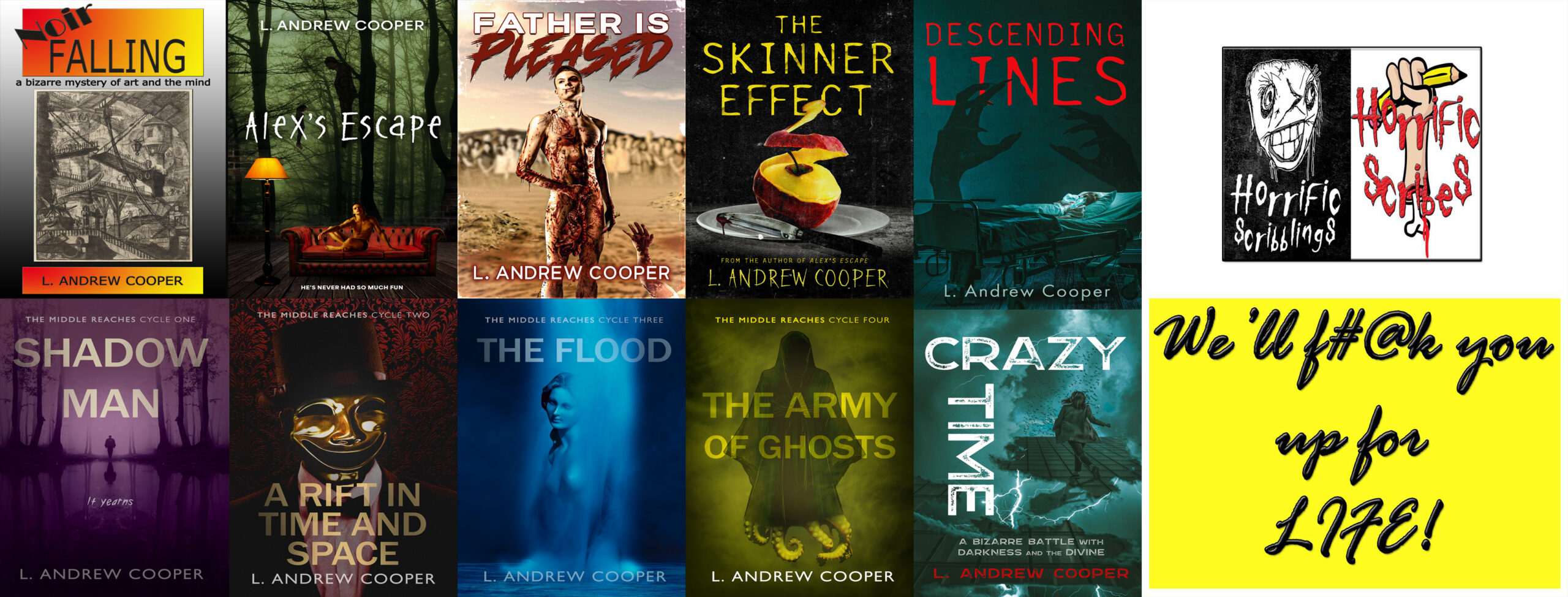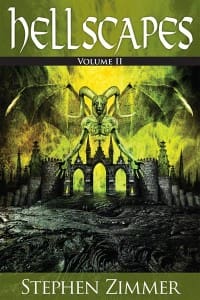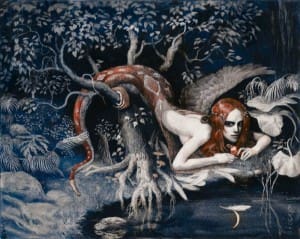With the second volume of Hellscapes stories, Stephen Zimmer solidifies his imagining of Hell for the twenty-first century and becomes its invisible tour guide. He shows readers, in details with vividness often worthy of Dante, a pit expansive enough to include contemporary multicultural values, but the pit has both fire and teeth to devour people from across the spectrum who transgress against those values. In short, he gives us a Hell most of us can believe in.
After all, everybody has a different notion of “sin” these days—two members of the same church will often disagree on the finer points—but Zimmer finds enough common ground for damnation to make his condemned almost transcendentally loathsome. A corporate raider leaves thousands destitute. A man does nothing while people around him suffer. A cop beats people with wanton, deliberate cruelty. While Zimmer’s visions of Hell and its monstrosities are frightening, he engages the parts of our brains that take pleasure in the damnation of such people without forcing us… too much… to share in the guilt of the transgressions punished. As a result, this Hellscapes makes for a fun and chilling read.
For some of Mr. Zimmer’s views on his visions of Hell (particularly their origins in global cultures and religions) and more, see the interview related to this review. For information about the first volume of Hellscapes, see my earlier review and its related interview. As always, I volunteer for all my reviews.
The second Hellscapes volume begins with disorientation as we, along with central character Nicholas, stumble on an unfamiliar path toward Malizia, a major city in Hell where some of the volume’s tales take place. As the first tale’s title, “The Cavern,” might suggest, while it tells Nicholas’s story, gradually revealing how and why he came to be in Hell as well as what his fate entails, details of setting play a large part in storytelling. The final tale, “The Club,” serves as a pendant: characters in both bookend stories flesh out Malizia (Nicholas literally, as he enters a structure made in part from human flesh) while making their ways toward their final tortures.
The description of Nicholas’s journey to Malizia points to one of the book’s greatest strengths, language rich in metaphor and suggestion. Here and in the third tale, “Above as Below,” the landscape itself, and the feelings it inspires, seem threateningly alive. The ground beneath Nicholas’s feet is “bone-dry” (5), contributing to “tendrils of fear” that “slither” near “coils of desperation” (6), and Nicholas must confront a “desert maw” and a “gaping emptiness.” The bones, tendrils, coils, and gaping maws add up to a creature—inhuman, perhaps Lovecraftian, or something from Clive Barker (Zimmer cites Hellbound Heart in our interview, but I find resonance with Barker’s more fantastic works, such as Imajica, as well). In “Above as Below,” central character Gale observes she is on a “mountain” that is “bone-white and dense” (44), and with the enormity of the creatures above and below her, the context insinuates that the mountain could actually be a tooth, a shudder-inspiring touch of cosmic horror.
Zimmer doesn’t hold back, serving up explicit imagery and violence where it’s due, such as the giant phallus set to punish a rapist in eye-for-eye fashion, but he still stops before the description becomes unnecessary, remarking, “It took little imagination to know how the beast’s gargantuan erection would be employed” (84). The style of fearless, luxurious, yet still propriety-inflected description recalls the High Romantics, particularly Coleridge and Keats when Zimmer turns to snake women in “The Club:”
“Her features appeared to change, for just a moment. Eyes shifting into a reptilian hue and face taking on a serpentine cast, her smile became an expression of hunger and malice.” (70)
While I enjoy the state of mind such language puts me in—dream-like, which central character Darion of “The Club” recognizes when he attributes his glimpse of snakiness to “an altered perception” (84)—some readers might find aspects of the style antiquated, which shows when one of these women also receives the description “buxom vixen” (69).
Other than the effectiveness of the description, which consistently delivers images that rock the imagination with jarring combinations of things that slither and bite, the true testimony to the book’s success is that its pages fly by but still manage to engage the brain. That accomplishment is particularly striking because we more or less know characters’ fates at the outset. They’re damned, so Zimmer can’t rely entirely on the tension of wondering how stories will end to propel readers through pages. Instead, he has to maintain interest in how we’re going to get to the end, and he does that by keeping surprises coming on every page, populating paragraphs with new characters, new creatures, and new turns of phrase. The densely populated Hellscapes isn’t a tough crowd to navigate, but it is an amazing place to go people-watching. You might feel a little bad delighting in watching people suffer the ways they’ve made others suffer (if such suffering is wrong, should we really like it?), but you can save that thinking part for later and, for the moment, enjoy the thrills of good comeuppance and good scares.



Comments are closed.